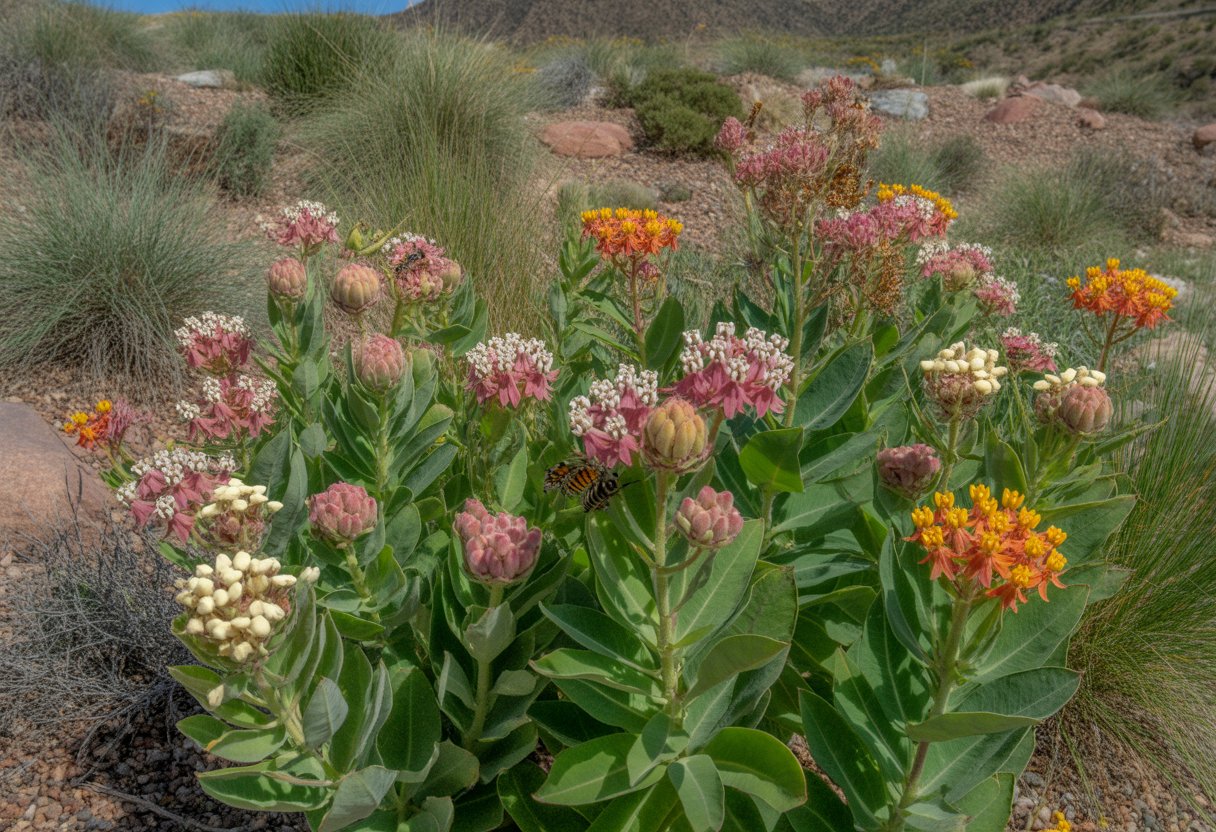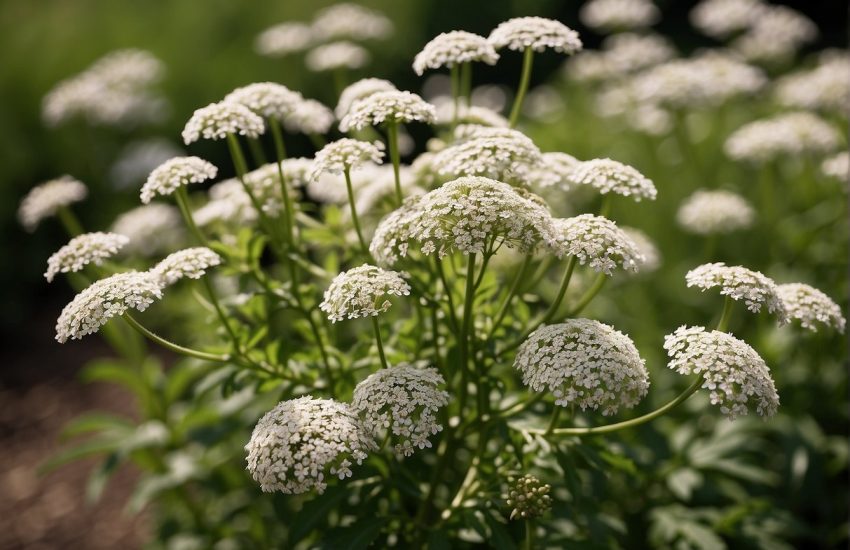Native Milkweed for New Mexico: Essential Guide to Growing and Benefits
Native milkweed species play a huge role in New Mexico’s ecosystems. They provide critical habitat and food for pollinators, especially monarch butterflies.
These plants actually do well in the local climate and soil, which makes them a smart and sustainable pick for gardeners and anyone interested in conservation. The best native milkweed for New Mexico is one that supports local wildlife while thriving in the state’s specific environment.

You’ll find several milkweed species growing wild in New Mexico. Each one is suited to different regions and moisture levels.
By picking the right native milkweed, you can help support monarchs and boost biodiversity right in your own backyard. It’s a small thing that actually matters.
Knowing which milkweed works best means understanding the different plant varieties, how they grow, and what native pollinators need. Let’s dig into what to plant and why it matters.
Native Milkweed Species in New Mexico

New Mexico is home to several native milkweed species that really matter for local ecosystems and monarchs. These plants come in different shapes, colors, and growth habits, so there’s a lot to choose from if you’re thinking about native planting or restoration.
Horsetail Milkweed (Asclepias subverticillata)
Horsetail Milkweed is a perennial from the milkweed family (Asclepiadaceae). It’s common in New Mexico’s dry and semi-dry areas.
You can spot it by its slender, whorled leaves that look a bit like horsetails. This plant grows about 1 to 2 feet tall and does well in dry grasslands, rocky slopes, and open woodlands across the Southwest.
Monarch butterflies depend on Horsetail Milkweed as a host plant. Other pollinators use it too.
It handles poor soils and drought surprisingly well, which makes it a reliable pick for native gardens. The flowers are small, pale green to white, and they show up in clusters in the summer.
Dwarf Milkweed (Asclepias involucrata)
Dwarf Milkweed is a low-growing perennial. You’ll find it in New Mexico and nearby southwestern states.
This one stays small—usually just 6 to 12 inches tall. It’s happy in dry, sandy, or gravelly soils.
It has narrow leaves and purple to pink flowers with a cool, intricate look. You’ll see it blooming from late spring into summer.
Dwarf Milkweed thrives in open, sunny spots, often in desert valleys and foothills. Monarch larvae use it as a food source, and its small size makes it a good candidate for xeriscaping or habitat restoration where drought tolerance is important.
Broadleaf Milkweed (Asclepias latifolia)
Broadleaf Milkweed grows mostly in New Mexico’s foothills and lower mountains. It’s a perennial that can reach 2 to 3 feet tall.
This milkweed stands out because of its broad, ovate leaves. You’ll notice greenish to yellowish flowers in dense clusters, usually blooming early in the summer.
It likes well-drained soils and often pops up in rocky, open areas or on slopes. Monarchs and other insects use it, and its larger leaves and taller growth make it easy to spot among New Mexico’s native plants.
Comparison to Nearby States’ Native Milkweeds
New Mexico’s native milkweed species have a lot in common with those in Arizona, Texas, Utah, Kansas, and Oklahoma. Horsetail Milkweed, for example, grows in Arizona and Utah too, showing it’s well-adapted to dry places all over the Southwest.
Dwarf Milkweed also pops up in Texas and Arizona, especially in deserts and foothills. Broadleaf Milkweed’s range stretches a bit into Texas and Oklahoma, where it finds similar habitats.
But New Mexico’s milkweed populations often show unique adaptations to local elevation and moisture. These differences matter for keeping genetic diversity strong in the milkweed family (Asclepiadaceae).
Ecological Importance and Pollinators
Native milkweed does a lot for pollinators and wildlife in New Mexico’s grasslands and open spaces. Its presence boosts biodiversity by giving crucial resources to a whole range of species.
Monarch Butterfly and Milkweed
Monarch butterflies depend on native milkweed—period. Female monarchs lay their eggs only on milkweed, and the caterpillars can’t survive without it.
The plant’s toxic compounds help protect monarch caterpillars from predators. Monarchs seem to prefer milkweed species that match New Mexico’s habitats, like grasslands and open woods.
If we want to keep monarchs around, we really need to keep native milkweeds in the landscape.
Supporting Native Bees and Hummingbirds
Milkweed flowers pump out nectar that attracts native bees. Bumblebees and solitary bees visit these blooms for food, and they end up pollinating other native plants in the process.
Hummingbirds use milkweed nectar too, especially when they’re migrating. The flower shape and nectar seem to fit what hummingbirds need for energy.
By supporting both native bees and hummingbirds, milkweed helps keep pollinator diversity high and ecosystems healthier.
Other Wildlife and Habitat Benefits
Milkweed stands add structure to grasslands and semi-arid areas. They give shelter and food to all sorts of insects and even some small birds.
The plant helps stabilize soil and supports a surprisingly complex food web. When you grow native milkweed alongside other local plants, you’re helping create a more balanced ecosystem.
Growing and Maintaining Native Milkweed
If you want to grow native milkweed in New Mexico, you’ll need to pay attention to its habitat and growth needs. Getting the site, propagation, and flowering right will help your plants thrive and support local wildlife.
Site Selection and Habitat Preferences
Most milkweed species in New Mexico do best in grasslands and open spots that get full sun. They’re usually perennials or subshrubs and want well-drained soil with moderate moisture, but they can handle drought after they’re established.
Some milkweeds hang out near wetlands or riparian zones, but most are happy in dry areas. Picking a spot with native soil keeps things low-maintenance and helps the local plant community.
Try to avoid heavy shade or packed-down soil. Matching the species to your environment matters—a few species work better in disturbed or sandy soils, while others prefer stable grasslands.
Planting and Propagation Techniques
You can grow milkweed from seed or cuttings, depending on the type. Most seeds need cold stratification for a month or two to wake up.
Direct sowing in fall or early spring works well and mimics nature. For perennials and subshrubs, transplanting nursery starts can help, while annuals are usually easier from seed.
Keep new plants watered during their first season so the roots get established. Don’t go overboard with fertilizer—milkweed actually likes the nutrient-poor soils you find in grasslands.
Flowering Season and Flower Color
Native milkweed in New Mexico generally blooms from late spring to early fall. Peak bloom depends on the species and elevation.
Flower colors range from pale pinks and whites to deep purples and even bright oranges. The timing matters for pollinators like monarchs, since they need nectar at specific life stages.
Some subshrubs bloom later, so you can extend the nectar season if you plant a mix. If you pay attention to local conditions, you can pick species that bloom when you want.
Popular Garden and Conservation Varieties

Gardeners and conservationists in New Mexico pick native milkweed species for their toughness and pollinator value. Some stand out for drought tolerance and how well they fit into different habitats.
Mexican Butterfly Weed (Asclepias curassavica)
Mexican Butterfly Weed (Asclepias curassavica) is a favorite perennial in New Mexico gardens. Its bright orange-red flowers and long blooming season make it a magnet for monarchs and other pollinators.
This milkweed is considered FAC (Facultative), so it can grow in both wetland and upland spots. That flexibility helps it adapt to different environments.
It likes full sun and well-drained soil, and once it’s established, it doesn’t mind a little drought. If you grow it, it’s smart to prune before frost to keep it from spreading where you don’t want it.
Best Practices for Conservation
When it comes to conservation, planting native milkweed species like Mexican Butterfly Weed can really help native fauna. Just be careful not to disrupt local ecosystems while doing it.
Local seed sources? Absolutely go for them. They keep genetic diversity strong and make the plants tougher over time.
Try planting milkweed in clusters—pollinators seem to love that. Here’s a good pollinator attraction resource if you’re curious.
Even though A. curassavica can handle wet spots, it’s better to avoid planting in areas that stay soggy. Skip the pesticides, too.
A little seasonal maintenance goes a long way. Cut back older plants to help fresh growth pop up.
Keep an eye out for invasive plants sneaking in. They can really mess with habitat quality if you let them.


